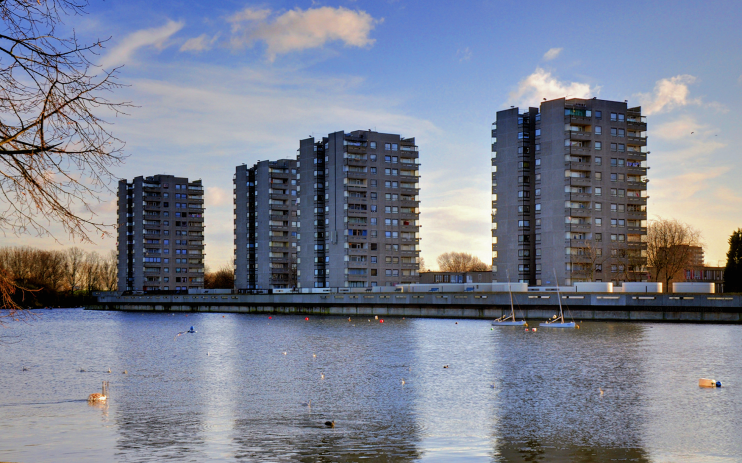Thamesmead
Thamesmead, Greenwich/Bexley
Once dubbed the ‘town of the twenty-first century’ Thamesmead is a vast housing estate, with some peripheral industry, situated on former marshland between Woolwich and Erith

The River Thames here makes its most northerly excursion within Greater London, so Thamesmead is on the same latitude as Westminster. Its name was the winning entry in a newspaper competition, although it has been suggested that the planners always had that name in mind – and they simply waited for a competition entrant to come up with it too.
After the land was vacated by the military, the Greater London Council developed Thamesmead in fits and starts from the mid-1960s to the early 1980s. The area was divided into sectors, of which Thamesmead South was the main housing zone, while Thamesmead East was initially designated for industry and commerce. Thamesmead Central offers the majority of the town’s retail facilities – but these are woefully inadequate for a settlement of such proportions. Thamesmead North was the last of the municipally built zones, while Thamesmead West later saw private development on a major scale. The first buildings used pre-cast concrete but this was subsequently abandoned in favour of more humane materials.
As the map below shows, the topography is dominated by a series of lakes and canals that serve to drain surface water – as well as providing good fishing and relieving the starkness of the built environment.
After the abolition of the GLC, the estate’s ownership transferred to a trust company and the founders’ wishful vision of a futuristic community has largely been abandoned in favour of traditional British suburban housebuilding.
Forecasts of Thamesmead’s final population have halved from the original target of 100,000. Despite a rapid spurt of growth since the turn of the century, even the revised figure looks unlikely to eventuate.
Because of its remoteness – and perhaps also its bleak ambience – Thamesmead has not proved a popular place in which to live. This has led to a spiral of decline and part of the district is now perceived as a ‘sink estate’.
In an effort to address Thamesmead’s problems, the Peabody housing association agreed in May 2013 to work with local authorities and other funders on a 10-year regeneration project that would include the construction of 700 new homes and associated community facilities. The figure was later revised upwards to a remarkable 3,000 homes across two housing zones. In October 2016 Bexley council’s planning committee approved Peabody’s detailed plans for the first 525 homes and outline plans for a thousand more.
Also in October 2016 the Mayor of London announced (tentative) plans for an extension of the Docklands Light Railway from Gallions Reach to Thamesmead.
Stanley Kubrick used Thamesmead South for location scenes in his 1971 masterpiece A Clockwork Orange: Southmere lake doubles as the ‘Flat Block Marina’, an old tramp is attacked under a walkway by the shopping centre and Alex dumps his fellow droogs into the water beside Binsey Walk.
Jonathan Harvey’s ‘urban love story’ Beautiful Thing (play 1993, film 1996) is set in Thamesmead.
From 2009 to 2013 Thamesmead’s least glamorous parts were the setting for E4’s award-winning comic drama Misfits.
